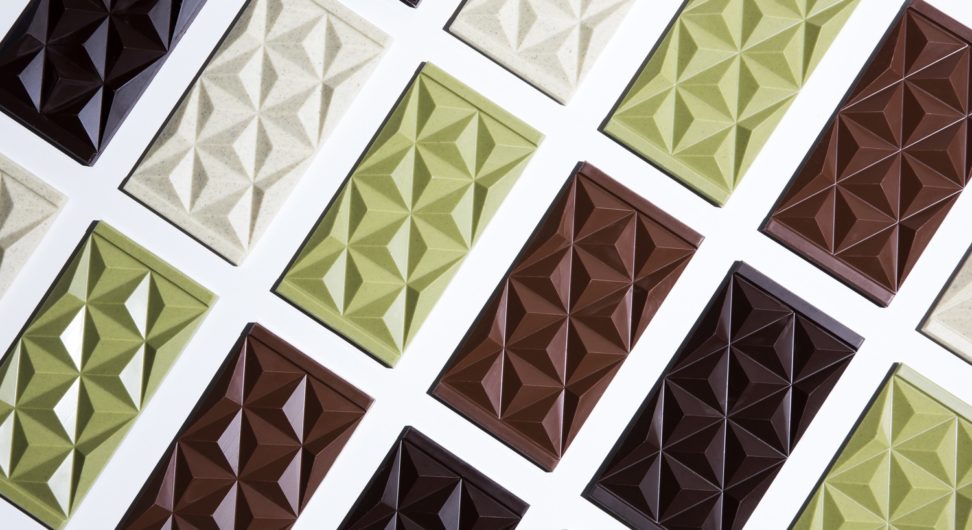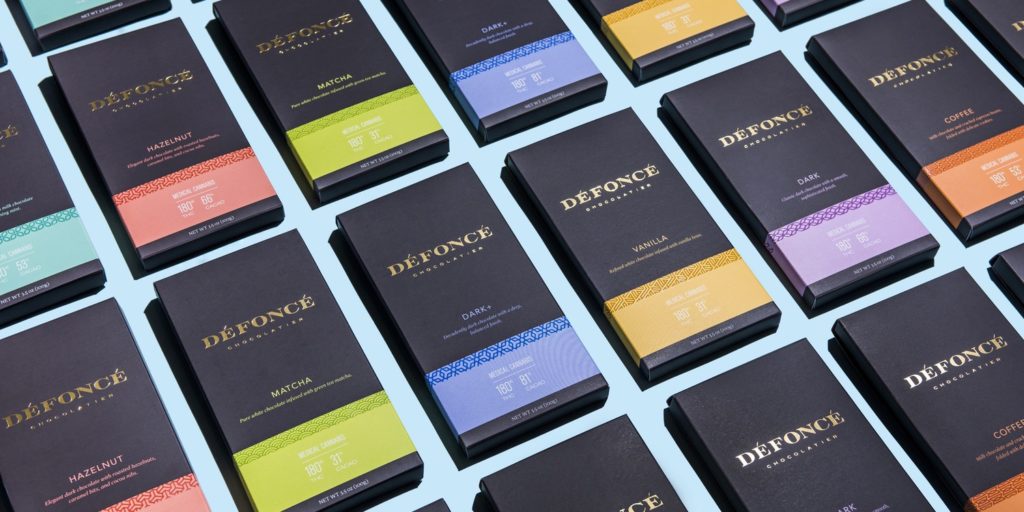Défoncé’s Eric Eslao: Beautiful Branding in a Controversial Landscape
There’s no denying it—legal cannabis is becoming a serious force here in the United States. Sure, it’s only kosher in four states right now (Colorado, Oregon, Washington, and California) but 2016 alone saw $6.5 billion in legal cannabis sales, and those numbers are expected to grow exponentially in the next decade.
Legalizing a substance which has, for decades and decades, been shrouded in controversy, is bound to create a sea change in the industry as a whole. And sure enough, it’s happening. The target audience, for example, is developing in a surprising way. Market research reveals that the rapidly-growing portfolio of legal cannabis users is “passionate, informed, from diverse backgrounds, and skewing older than you’d expect.”
There’s a story there. And not just a story of giggling, chilled-out Americans with a case of the munchies.
Since audience typically drives the market when it comes to branding and product development, the immediate challenge for entrepreneurs in the legal cannabis industry is to elevate the conversation.
There’s a story there. And not just a story of contentedly giggling, chilled-out Americans with a serious case of the munchies. A business story. One that involves ideation, innovation, branding, marketing, manufacturing, jobs. CREATION. It’s a fast-moving tsunami that’s hitting the creative industry.
That’s why we chose to focus our last RuNT event—Blunt Talk—on the subject of branding and advertising in the cannabis age. We curated a panel of brilliant and insightful frontrunners in the industry; among them was Eric Eslao, formerly a Senior Producer at iTunes, currently Founder and CEO of Défoncé Chocolatier.
A brand that is wholly unique in the marketplace.
Momentary tangent because we have to tell you a bit about Défoncé. They make “seed-to-bar” artisanal edibles, working in conjunction with a partner cannabis farm situated in the Sierra Nevada Foothills. They grow their plants outdoors, beneath the warm California sun, opting to leverage nature’s finest pest deterrents (humming birds and ladybugs) rather than chemical pesticides. The TCG-laden fruits of those sun-grown plants are then combined with organic milk and dark chocolate (white chocolate too!) and packaged beautifully. Clean, fresh and minimal. With candy pastel color pops set against metallic foil and a sleek serif logotype. All these efforts culminate in a brand that is wholly unique in the marketplace, setting Défoncé apart from its competitors.
We were fascinated by the brand. So much so, that we sought out a 1-on-1 interview with the founder himself.
————————————————————————————————————————-
We didn’t seek to be a challenger brand, but by definition, Défoncé is one.
M+P: You used to work for iTunes. So how is it that you came to start making edibles as a profession? What was the industry environment like at the time? It must have taken some real balls to start this company at the time you started it!
EE: I started looking at the cannabis space two to three years ago. I was still at iTunes and loving what I was doing so I was never thinking of jumping into cannabis full-time. There were still a lot of awful edibles on the shelves at the time—from the poorly packaged to the completely unpalatable. So when I decided the edibles space needed a pretty serious makeover, I hired a professional chocolatier and we started to get to work.
I’ve always been humbled by the amount of work it takes to make something amazing.
M+P: Artisanal, single-origin, under the California sun. All words and phrases from your site. Défoncé is taking cannabis to new heights, using words like “terroir”, and likening your growing process to that of grape growers and vintners—age old traditions. From a branding perspective, was this approach born out of an instinct to separate your brand from the tie-dye, hippie, hemp, granola, high times image of cannabis from years past? Or are you mostly just trying to create something that’s never existed before?
EE: It’s definitely the latter. I’m extremely respectful and appreciative of all the people that have advocated the use of cannabis. Many of them are friends and partners of the company. Défoncé is just another perspective on what is an edible—it wasn’t an attempt to separate or replace anything previously created.
I’ve always been humbled by the amount of work it takes to make something amazing. We really do go to great lengths to make the best possible edible. Our brand, and how we communicate it, is a reflection of that effort.
M+P: Défoncé means “high” in French. It’s a GREAT name! Why the French inspiration, though? Is this tied back to the vintner theme, or is there a personal reason for it?
EE: Yes. Défoncé matched our brand. And I really like how easily people can use it as a verb—i.e. “Let’s Défoncé!”
M+P: Your product design and packaging are gorgeous. And they’re definitely not what we think of when we think of stereotypical edibles. In fact, if your product were on the shelves at, say, Whole Foods, people would never know at first glance that it was made with cannabis at all! Was this the intention? To kind of join California’s artisanal culinary culture?
EE: I was still at iTunes when we created the product so you can see some of the obvious influences (i.e. soft-touch, negative space, focus on color).
Overall, the driving design principle was contrast. Black versus color. Matte versus metallic. Two-dimension versus three-dimension. So it had less to do with making something different, but just being intelligent and thoughtful in designing the product.
Cannabis has a tendency to chill people out. Maybe that’s the reason everyone’s so friendly.
M+P: You came from Apple—a coveted and recognizable brand. I’ve seen quotes from the media like, “If Apple were to make edibles, this is what they would look like.” Does that bother you…sort of feeling like you’re typecast? Or do you find that your Apple background has helped lend legitimacy to Défoncé as a high-end brand?
EE: I spent a good part of my career at iTunes, and for the better. I do see the world differently due to it. The place really changes your DNA. iTunes Producer turned cannabis executive is an interesting narrative so I understand why the media gravitated to it. I 100% embrace it.
M+P: Would you define your brand as a challenger brand? Have you run up against any lashback in your efforts to lead the pack in taking cannabis mainstream?
EE: We didn’t seek to be one, but by definition, Défoncé is one. The cannabis community is actually pretty small—we all know each other. From my experience, everyone has been very supportive of our efforts. Cannabis has a tendency to chill people out…maybe that’s the reason why everyone is so friendly.
Thanks to Eric for taking the time to talk with us. We’re thrilled for the brand’s success and excited to see where it goes as the industry grows. For some literal eye candy, follow Défoncé on Instagram.
This work is licensed under a Creative Commons Attribution-ShareAlike 4.0 International License.



